Celebrating the vibrant and culturally rich Chinese New Year is a fantastic opportunity to introduce children to global traditions. One of the most iconic symbols of this festive season is the Lion Dance, a performance full of energy, color, and symbolism. This art lesson plan is designed for elementary students to learn about the Chinese New Year Lion Dance while unleashing their creativity through drawing and painting. It’s a fun and engaging way to explore art techniques and cultural appreciation simultaneously.
First, immerse your students in the world of the Chinese Lion Dance with this captivating video:
chinese lion dance from mounin on Vimeo.
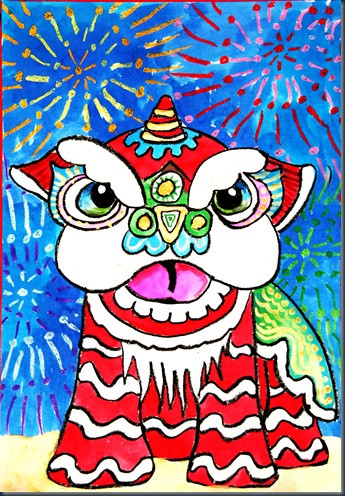 Step one of a lion dance draw-along for kids, starting with a large oval shape for the lion's head.
Step one of a lion dance draw-along for kids, starting with a large oval shape for the lion's head.
Draw Along: Creating Your Lion Dance Artwork
This draw-along activity is perfect for young artists, providing a structured yet flexible approach that boosts confidence and encourages individual expression. Even young kindergarteners can participate with a little help in the initial steps.
Step-by-Step Guide to Drawing a Chinese New Year Lion Dancer:
-
Start with the Eye: Begin by drawing a large oval for the lion’s head. Inside, create the eye using a ‘momma circle’ (outer circle), ‘daddy circle’ (iris), and ‘baby circle’ (light reflection).
-
Cheeks and Mouth: Draw two “C” shapes starting from the outside of the eye to form the cheeks. Connect them with a “rainbow line” to create the lion’s mouth area.
-
Tongue and Teeth: Inside the mouth, draw “smiley lines” for the tongue and add a line above for the teeth.
 Drawing step four, showing how to add the tongue and teeth to the lion's mouth using smiley lines.
Drawing step four, showing how to add the tongue and teeth to the lion's mouth using smiley lines. -
Horn: Draw a “roundy triangle that is not pointy” on top of the head for the lion’s horn.
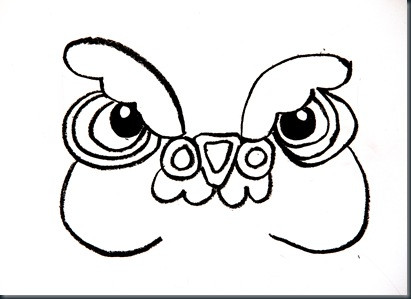 Step five in drawing a lion, focusing on creating a rounded triangle shape for the lion's horn.
Step five in drawing a lion, focusing on creating a rounded triangle shape for the lion's horn. -
Beard Fur: Add zig-zag lines around the lower part of the face to represent the lion’s beard fur.
 Drawing step six for the lion's face, showing the addition of zig-zag lines to create the beard fur.
Drawing step six for the lion's face, showing the addition of zig-zag lines to create the beard fur. -
Wiggle Waggaly Line: Above the horn, draw a “wiggle waggaly” line for added detail and texture to the lion’s head.
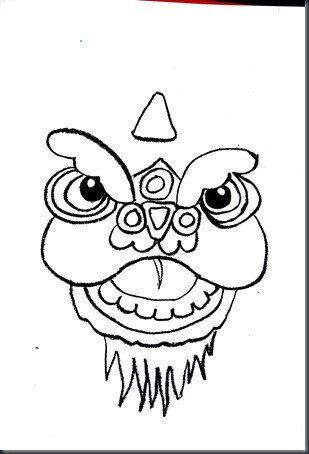 Drawing step seven, demonstrating how to add a wiggle waggaly line above the lion's horn for detail.
Drawing step seven, demonstrating how to add a wiggle waggaly line above the lion's horn for detail. -
Ears: Add two semi-circular ears on both sides of the lion’s head to complete the basic structure.
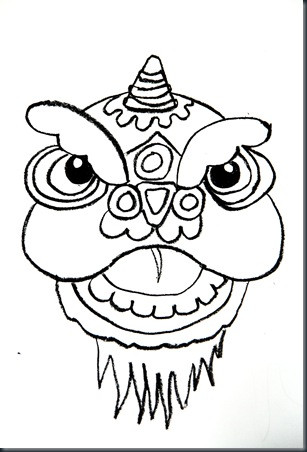 Drawing step eight for a lion, adding semi-circular ears to both sides of the head.
Drawing step eight for a lion, adding semi-circular ears to both sides of the head. -
Details and Embellishments: Encourage students to add their own creative flair! They can draw different patterns on the lion’s face and body, making each artwork unique.
 Drawing step nine, encouraging kids to add unique details and patterns to their lion dance drawing.
Drawing step nine, encouraging kids to add unique details and patterns to their lion dance drawing. -
Adding Fireworks: To enhance the festive theme, have students draw fireworks in the background using dots and “follow the leader” lines, adding dynamic movement to their artwork.
-
Embellish with Oil Pastels: Before painting, students can go over their pencil lines with oil pastels to make the outlines bolder and add vibrant colors to the fireworks.
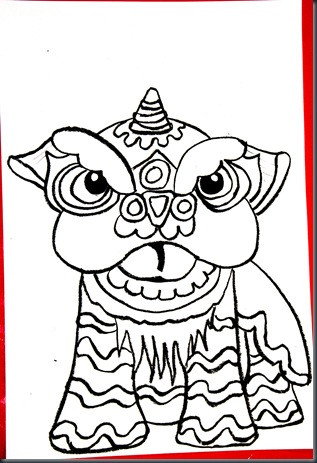 Step eleven, using oil pastels to embellish the fireworks and outlines in the Chinese New Year art.
Step eleven, using oil pastels to embellish the fireworks and outlines in the Chinese New Year art.
Painting Techniques for a Festive Finish
Bring the lion dance to life with vibrant colors! Liquid watercolors are excellent for younger children due to their ease of use and brilliant hues.
-
Watercolor Magic: Use liquid watercolors to paint the lion and fireworks. Encourage blending and layering colors for depth.
-
Gold Accents: Add shimmer and shine using gold tempera paint for accents on the lion costume and fireworks, capturing the celebratory spirit of Chinese New Year.
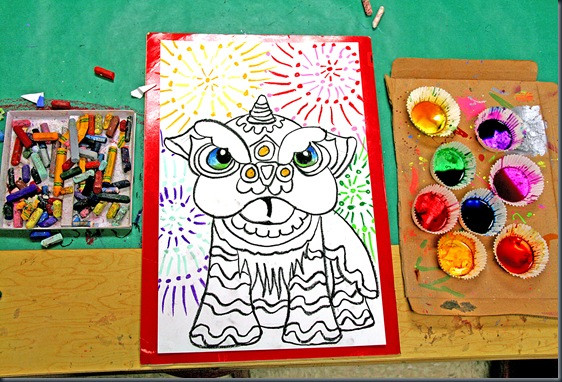 Step thirteen, adding gold tempera paint accents for shimmer on the lion costume and fireworks.
Step thirteen, adding gold tempera paint accents for shimmer on the lion costume and fireworks. -
Watercolor Resist Sky: For the background sky, use a watercolor resist technique. Students can use crayons or oil pastels to draw designs, then paint over with watercolors. The wax will resist the water, creating interesting textures and patterns.
By the end of this lesson, students will not only have a vibrant artwork celebrating the Chinese New Year lion dance but also a deeper understanding of this cultural tradition. This project is adaptable for different age groups and skill levels, making it a versatile addition to any art curriculum.
[

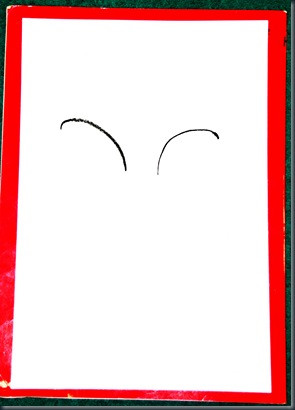 Drawing step two for a lion's face, focusing on adding the pupil, iris, and light reflection within the eye.
Drawing step two for a lion's face, focusing on adding the pupil, iris, and light reflection within the eye.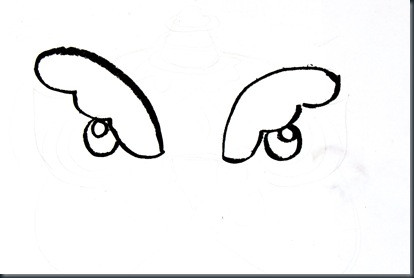 Step three of the lion drawing lesson, illustrating how to draw the lion's cheeks and mouth using C-shapes and a rainbow line.
Step three of the lion drawing lesson, illustrating how to draw the lion's cheeks and mouth using C-shapes and a rainbow line.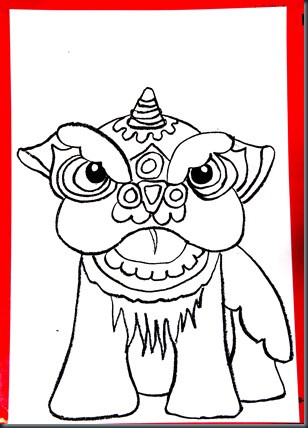 Step ten of the lion dance art project, instructing students to draw fireworks in the background using dots and lines.
Step ten of the lion dance art project, instructing students to draw fireworks in the background using dots and lines.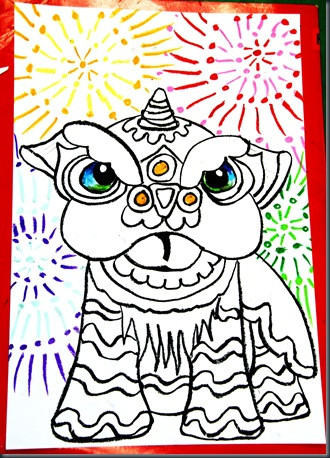 Step twelve, demonstrating the use of liquid watercolors to paint the lion and fireworks in vibrant colors.
Step twelve, demonstrating the use of liquid watercolors to paint the lion and fireworks in vibrant colors.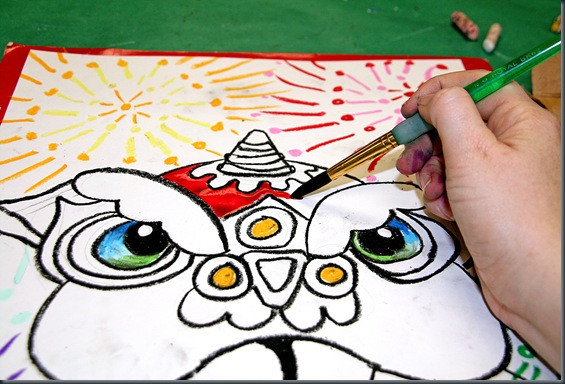 Step fourteen, using a watercolor resist technique to create textured backgrounds for the sky in the artwork.
Step fourteen, using a watercolor resist technique to create textured backgrounds for the sky in the artwork.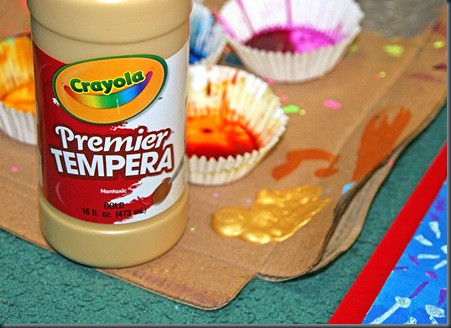 Finished examples of student artwork from the Chinese New Year lion dance art lesson, showcasing colorful lion faces and firework backgrounds.
Finished examples of student artwork from the Chinese New Year lion dance art lesson, showcasing colorful lion faces and firework backgrounds.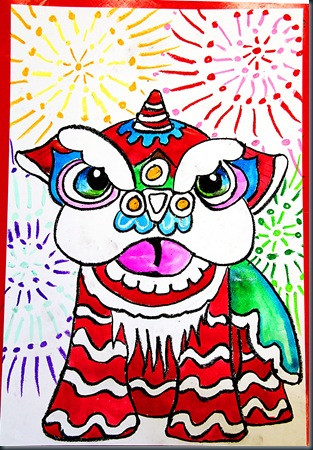 Showcase of diverse student artworks from the lion dance lesson, highlighting variations in color and firework designs.
Showcase of diverse student artworks from the lion dance lesson, highlighting variations in color and firework designs.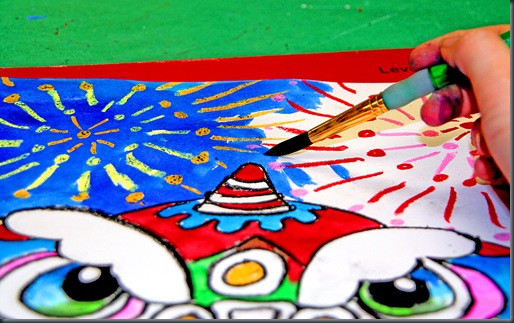 Examples of student's lion dance art projects, displaying different stages of completion and artistic interpretation.
Examples of student's lion dance art projects, displaying different stages of completion and artistic interpretation. Student artwork from the Chinese New Year lesson plan, featuring colorful lion faces and festive elements.
Student artwork from the Chinese New Year lesson plan, featuring colorful lion faces and festive elements.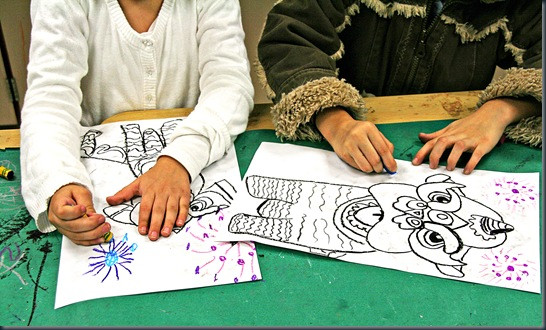 A classroom display of first-grade student artwork, showcasing their successful Chinese New Year lion dance drawings.
A classroom display of first-grade student artwork, showcasing their successful Chinese New Year lion dance drawings.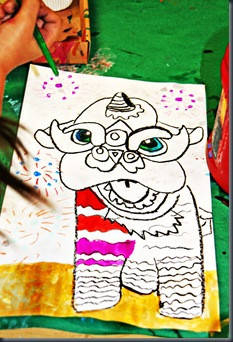 Close-up of student's colorful lion dance artwork, highlighting the vibrant details and expressive style.
Close-up of student's colorful lion dance artwork, highlighting the vibrant details and expressive style.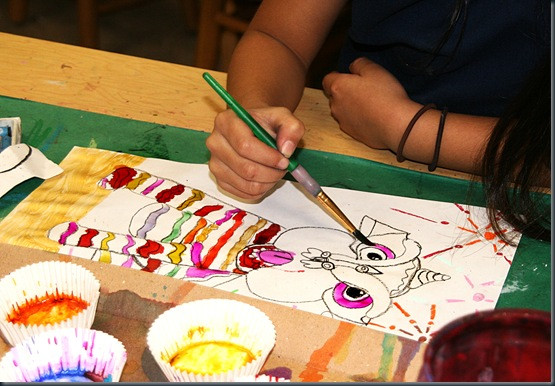 Collection of diverse student lion dance art projects, showcasing different interpretations and color palettes.
Collection of diverse student lion dance art projects, showcasing different interpretations and color palettes.